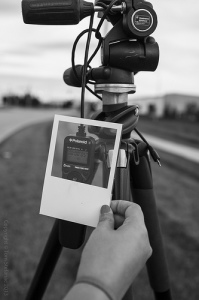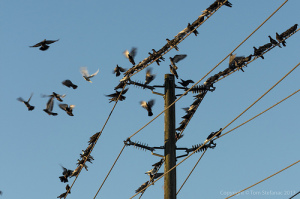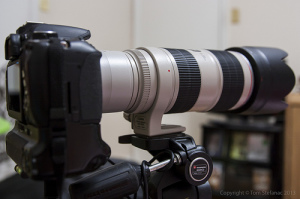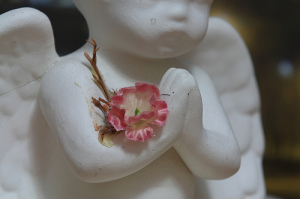Remember those good old instant cameras? Well, you can still buy them but finding Polaroids instant film is not exactly easy. Sure, once upon a time you could walk into any store and find just about all the film you could have ever wanted.
Today that’s hardly the case but with the internet finding film is about having patience, the patience to find a good reputable distributor and then waiting for it to work through the mail system.
In what was a spur of the moment thought I decided to replicate some picture in picture photography, but Polaroid style. I decided to get my girlfriend who is a very brave hand model to hold a piece of paper in front of my lens. I was hoping to do an 8×11 shot but I did not have any crisp paper with me, instead I found an old white 4×6 wedding invitation. She held the blank side of the invitation towards me; I framed the shot and took it, then I quickly took another without her hand or the paper in the shot. This gave me two photos, one with a clean background and the other with the paper and her hand which would essentially be the picture.
In Photoshop I automatically stitched the two images together using the automated align & stack tool. I then used a layer mask to create a 4×4 square hole in the paper and allow the background layer to burst through. I tweaked the background contrast to make it look like there was a loss in brightness/contrast to get more of a matte look on the paper and make it look like an actual photo of the background. I did want to make the image believable; otherwise it just looked like a piece of paper with a square hole in it (hardly the effect I’m going for).
Seeing as my remote trigger is a cheap 10 dollar Polaroid unit that operates flawlessly I might add, it was only fitting to make this the focus point of the image. Polaroid instant film meets a Polaroid trigger in a digital world.
Maybe next time I’ll bring some empty picture frames with me and see how those images turn out.








